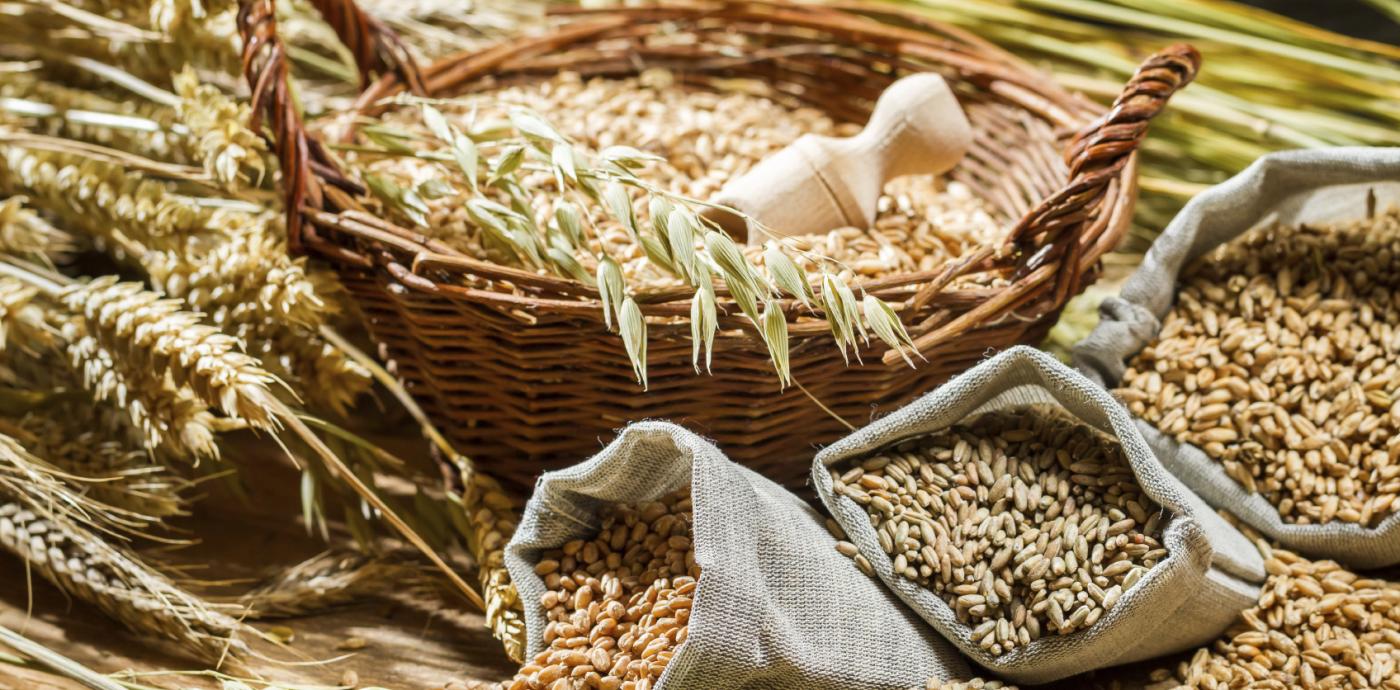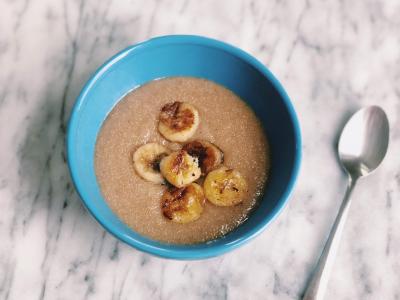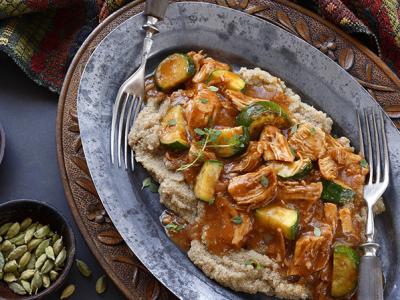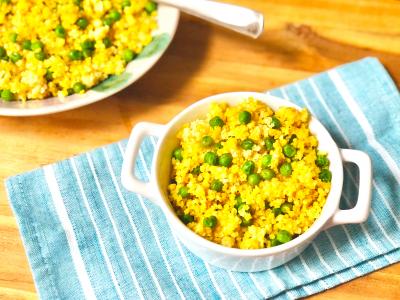Share This
Before industrial milling made refining grains easy and affordable, traditional diets around the world included whole grains as a versatile foundation of most meals. These ingredients provide our body with steady energy, nourishing our brain, our muscles, and our heart.
In the Global Burden of Diseases Study, researchers analyzed the diets and health outcomes of people in 195 countries around the world. They found that the largest dietary risk factor for disability-adjusted life years in both men and women is not low intake of vegetables or high intake of sugar – it is low intake of whole grains!
Traditional diets like the Mediterranean diet are not low carb. In fact, carbohydrates (in the form of whole grains, tubers, fruits, vegetables, and legumes) feature prominently in heritage diets around the world – cultures celebrated for their good health and longevity. Making the switch to whole grains is a simple step to enjoy the meals you love in a form that incorporates both more nutrition and more flavor. Below, join us on a culinary journey through the world of whole grains.
Mediterranean Whole Grains
Wheat, alongside grapes and olives, is considered a part of the “holy trinity” of Mediterranean cuisine. Although refined breads and pastas are common today, grains like wheat were eaten in their whole grain form throughout much of history, including in the Mediterranean.
Nothing beats the aroma of freshly baked bread. Sprouted Whole Wheat Sweet Potato Focaccia Bread with Za’atar is one of our favorites as the air starts to turn chilly, and is the perfect accompaniment to Mediterranean soups and stews. For any whole grain breads that may be past their prime, use them to make a Panzanella Salad with Tomatoes and Olives, or use them to thicken soups like the Italian Ribollita (vegetable and bean soup) or the Spanish Salmorejo (chilled tomato soup).
Whole wheat pasta is a weeknight staple that can be dressed up with any number of Mediterranean toppings, from a quick and vibrant pesto sauce, to a hearty tomato-based ragu, to the family favorite peas and cheese. Tabbouleh salad is a traditional Eastern Mediterranean dish made with whole grain bulgur wheat, parley, and tomatoes. This refreshing grain salad tastes great chilled, making it a great option for make-ahead meals or lunches.
Throughout Greece, you’ll also find barley rusks. Similar to large croutons or unsweetened biscotti, these whole grain barley-based breads are perfect for soaking up tomato salads and herby dips. Barley rusks can be tricky to find in the United States, but they’ll be on the menu for travelers joining us as we taste our way through the Peloponnese and Athens this spring.
Latin American Heritage Whole Grains
If wheat is the staple grain of the Mediterranean, corn (or maize) is most certainly the staple grain of Latin American Heritage diets. Traditional Latin American cultures learned how to treat corn with alkali, creating masa harina, which makes the B vitamins in corn more readily absorbed by the body. Enjoy whole grain corn tortillas as a base for creative, seasonal tacos and tostadas. Some of our favorite combinations include Wild Veggie Tostadas, which feature cabbage, kale, and numerous other colorful ingredients, and Three Sisters Tacos, which are filled with squash, beans, avocado, and cheese.
Latin America is also home to nutritious ancient grains like quinoa and amaranth. Try quinoa, a versatile grain that cooks in just 12 minutes, in a Fiesta Quinoa Salad with peppers and beans, or in an elegant yet simple salad of wilted beet greens and avocado slides. Amaranth has a creamier texture, making it a fantastic swap for oatmeal. If you’re new to amaranth, Spiced Amaranth Porridge with Caramelized Bananas is a warm and cozy place to start.
African Heritage Whole Grains
Many of the ancient grains popularized for their high nutrition content, like sorghum, millet, and teff, have a rich history across the African Continent. These ingredients are easy to incorporate into your daily meals for a burst of nutrition, flavor, and texture. For breakfast, start your morning with Maple Walnut Teff Porridge or Banana Millet Breakfast Porridge. For lunch, enjoy a bowl of Coconut Curry Teff and Lentil Vegetable Stew or Millet with Zucchini and Chickpeas. For dinner, settle in with Slow Cooker Sorghum Jambalaya with Chicken or Teff Polenta with Ethiopian Chicken Stew. These hearty recipes will be sure to leave you with sustained energy throughout the day.
African women brought knowledge of rice cultivation across the African Diaspora, and today, whole grain rice shows up in various forms throughout African Heritage cuisine. Throughout West Africa, you’ll find variations of the dish Jollof Rice. In the American South, you’ll see hints of that culinary history in the dish Jambalaya. And in the Caribbean, you’ll find Red Beans and Rice in Coconut Milk. Whole grain brown rice (the form traditionally consumed before rice milling became widespread) is interchangeable with white rice in most recipes — you just need to add a little extra cooking time.
Asian Heritage Whole Grains
From brown rice, to black (or “forbidden”) rice, to red rice, and beyond, there are a number of delicious whole grain rices that show up throughout Asian Heritage cuisines. Next time you make fried rice, swap in brown rice. America’s Test Kitchen found that brown rice is actually better suited for fried rice because it doesn’t clump as much as white rice. Traveling down to Southeast Asia, brown rice is also delightful in a Brown Rice Bowl with Chana Masala and Curried Cauliflower, and Red Curry Kabocha Squash over Brown Rice.
Before rice, millet was a staple grain of Asia thousands of years ago. The oldest fossilized bowl of noodles discovered by archeologists in China was actually a form of millet noodles, thought to be about 4,000 years old. When it comes to cooking with whole grain millet, Southeast Asia (especially India) is lightyears ahead of much of the world, using it in sides, stews, and flatbreads. Try a simple Millet Tahari served alongside salmon or dal.
Whole grains are also used to make different types of Asian noodles, from the Japanese soba noodles (made from whole grain buckwheat flour) to ramen and pad Thai noodles, which can be found in an assortment of whole grain varieties (like brown rice- or millet-based) today. Try making Stir Fried Whole Grain Noodles with Mushrooms, Kale and Crumbled Tempeh or Soba and Cabbage Salad with Peanut Miso Dressing.
Heritage diets offer an endless supply of inspiration for adding more whole grains to your plate and are the basis of our handy meal planning book, Whole Grains Around the World: An Oldways 4-Week Menu Plan. Don’t settle for bland or blank slates when choosing your grains. Take a cue from healthy, traditional cultures by leveraging whole grains as a source of depth and richness in recipes by choosing one new whole grain to incorporate into your meals this week. Once you venture into the wonderful world of whole grains, you won’t want to go back.
Want biweekly Heritage Diet information and recipes in your Inbox? Sign up for our Fresh Fridays newsletter by clicking the Subscribe button at the bottom of this page!






Comments
Add a Comment